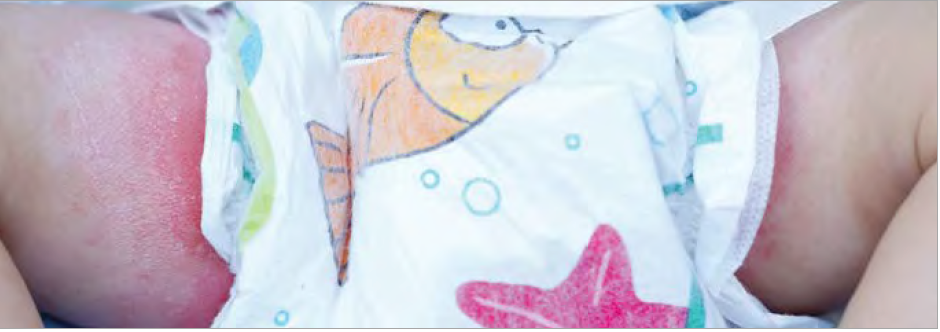Diaper dermatitis: what it is and how we can take care of it
In the neonatal period the skin is very delicate, thin (about half of that of adults) and almost devoid of a hydrolipidic film, which is responsible for its softness, impermeability and protection from external agents. Since the full maturation of the skin occurs only after the age of 3, a condition of relative skin fragility persists throughout early childhood, with alterations of the typical barrier function and frequent irritation and inflammation characterized by redness.
One of the most typical forms in paediatrics is diaper dermatitis (or erythema): an inflammation that affects the skin of the genitals and bottom and which can appear throughout the period of use of the diaper, with peaks around 9-12 months, that is, when the child acquires and maintains the sitting position for longer. In the first 2 years almost all children experience it: often in a mild form (irritant dermatitis),
with slight redness, dryness and possible papules-vesicles on the convex areas; other times with more serious manifestations, which may include erythematous rashes, sores and ulcers spreading up to the buttocks, inner thighs and waist; in these cases the child may feel discomfort and burning every time he gets wet or dirty with urine and faeces. Contrary to what one thinks (and what the name suggests),
the diaper is not exactly the cause of the disorder, but rather the contributing cause. At the origin, in fact, there is above all the incomplete functioning of the skin barrier, correlated with a higher pH value of the skin than the 5.5 of adulthood. From here, repeated rubbing with the diaper and the humid environment it generates can cause skin maceration and therefore erythema. Among the causes, moreover, we recall
contact allergies (with detergents, creams or detergents for cloth diapers), infections due to bacteria, fungi or yeasts (such as candida dermatitis) and
variations in nutrition linked to the introduction of new foods with weaning , which modify the composition of the bacterial flora and faeces.
Diaper rash: the remedies
Keep the area dry and clean by changing the diaper frequently, washing the bottom with water (combined with rice starch or a neutral detergent if necessary) and carefully patting dry. Afterwards, a veil of
soothing and protective cream (for example with zinc oxide) may be useful; alternatively, the
topical use of breast milk , with anti-inflammatory properties, is very effective. A good tip is to use diapers that are slightly larger in size to allow air to circulate. In the summer, leave your baby naked for as long as possible. Consult your pediatrician if the problem persists or worsens.
Freely taken from an article by Mattia Lerner in Nascere Mamma





